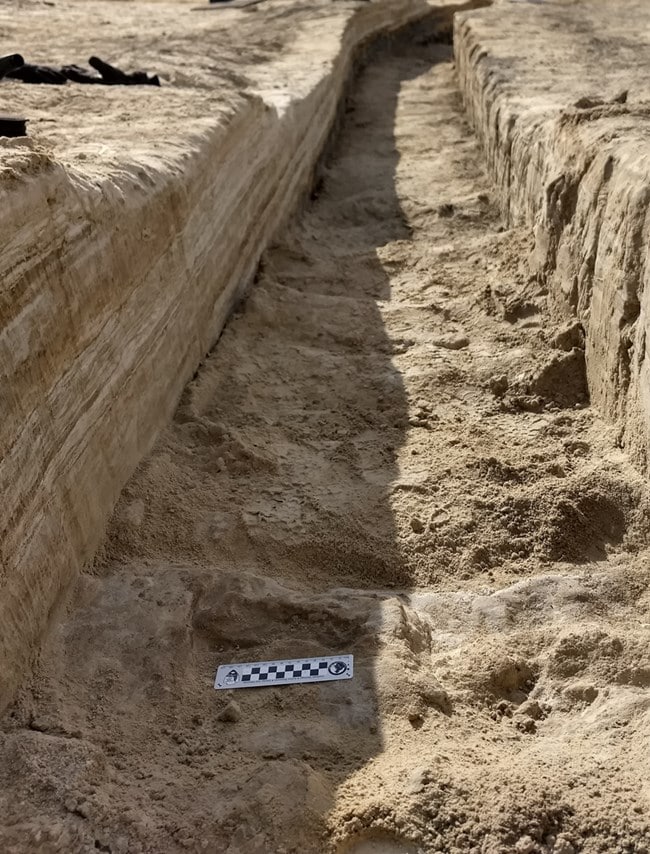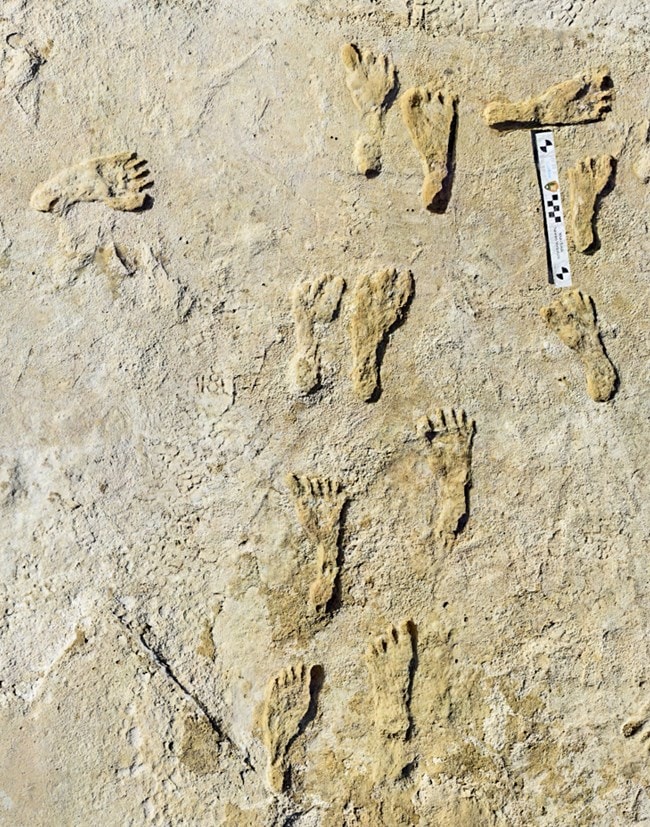North America’s Oldest Known Human Footprints Discovered in White Sands National Park
This news story about the discovery of oldest known human footprints in North America at White Sands National Park was adapted from a September 23, 2021, National Park Service press release. You can read the original release here.
After the world’s longest fossilized human tracks were discovered at White Sands in 2017-2018, the park now boasts another paleontological record.
According to the National Park Service, new research done in White Sands National Park, New Mexico has revealed the oldest known human footprints in North America.
This amazing discovery proves that humans lived in the Tularosa Basin at least 23,000 years ago, which is thousands of years earlier than what was previously assumed.
“These incredible discoveries illustrate that White Sands National Park is not only a world-class destination for recreation but is also a wonderful scientific laboratory that has yielded groundbreaking, fundamental research.”
White Sands National Park Superintendent Marie Sauter

White Sands National Park Reveals Oldest Human Footprints in North America
These ancient fossilized human footprints were buried in several layers of gypsum soil in one of White Sands National Park’s playas—the park is home to the largest gypsum dune field in the world.
Scientists from the U.S. Geological Survey radiocarbon-dated seeds embedded in the footprints. Further analysis allowed them to establish the seeds’ age.
This groundbreaking research extends the period during which humans and Pleistocene (Ice Age) megafauna coexisted in North America dramatically. It confirms that people lived in North America before “major glacial advances at the height of the last ice age closed migration routes from Asia.”
More details about these findings are available in an article in the leading scientific journal Science.
“This study illustrates the process of science – new evidence can shift long held paradigms.”
USGS Acting Rocky Mountain Regional Director Allison Shipp.

White Sands National Park contains the world’s largest-known collection of Pleistocene age (Ice Age) fossilized footprints in the world and has been recognized as a so-called ‘megatracksite’ since 2014.
In addition to human footprints, tracks from the Columbian mammoth, saber-toothed cat, dire wolf, and other Ice Age animals have been discovered at White Sands.
More information about the fossilized footprints in White Sands National Park is available here on the park’s website.
This research was a collaboration between scientists from White Sands National Park, the National Park Service, U.S. Geological Survey, Bournemouth University, University of Arizona and Cornell University, in connection with the park’s Native American partners.
White Sands National Park protects and preserves the world’s largest gypsum dune field, at least 23,000 years of archaeology, adaptive flora and fauna, as well as Works Progress Administration-era historic pueblo buildings.






